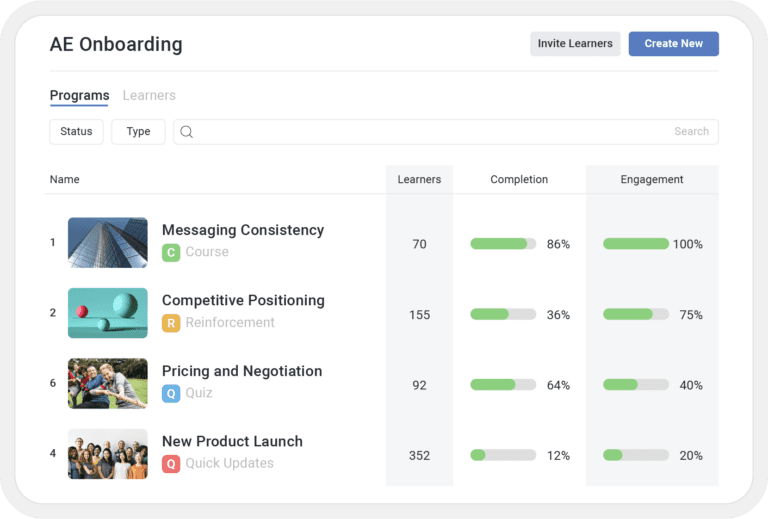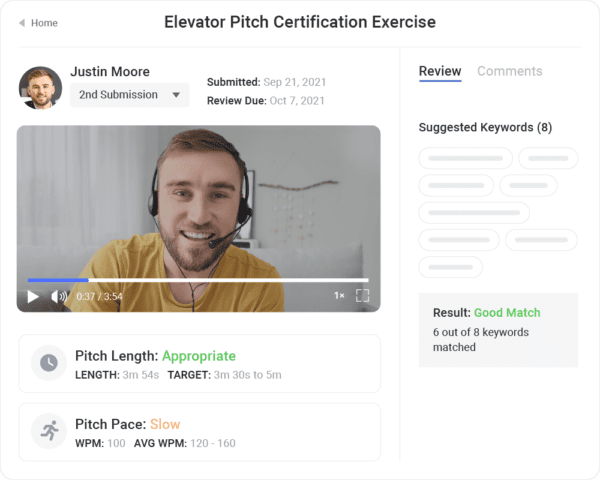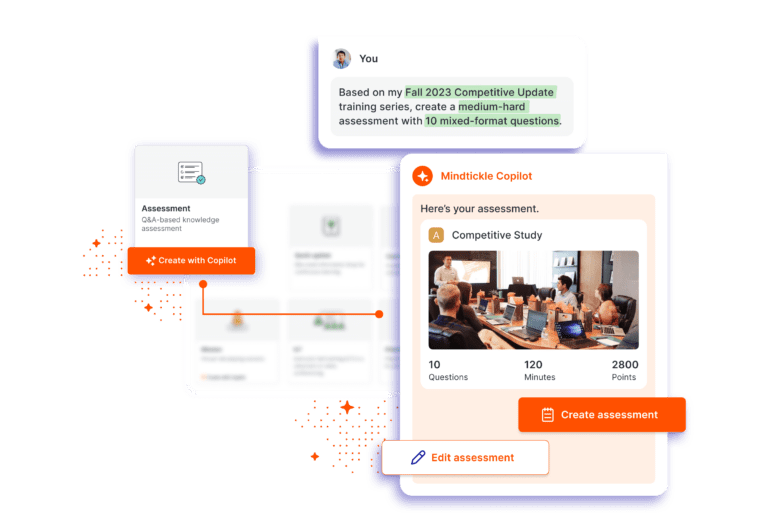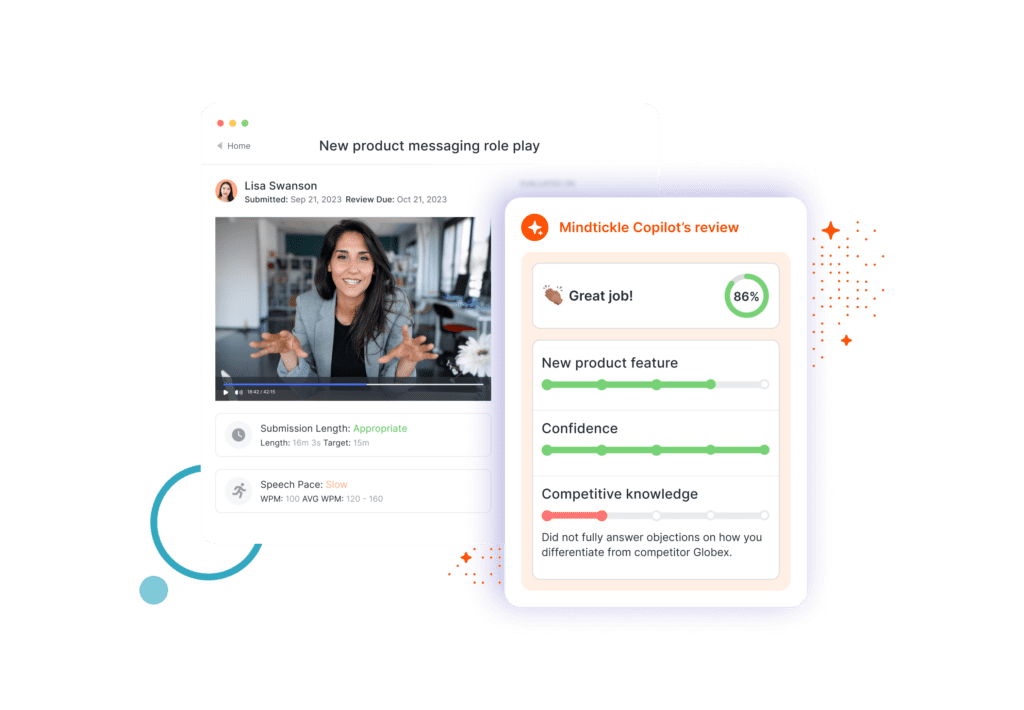Solution Selling: What is it and When is the Solution Selling Methodology Used?
![]() Vivian Batman
on
November 2, 2023
Vivian Batman
on
November 2, 2023
All too often, sales reps accidentally adopt a “one size fits all” approach to selling. They focus too much on touting the features and benefits of a product or service – without regard to whether or not these features are actually relevant to a specific buyer.
The result? Buyers become disengaged – and deals go south.
Increasingly, top sellers are adopting a more effective approach: solution selling. Those who do are able to present bespoke solutions that solve their customers’ unique challenges. This approach helps sellers earn customers’ trust – and close more deals.
In this post, we’ll explore what solution selling is, when it’s used, and how it differs from other selling approaches. We’ll also share some of the key challenges and benefits of making the shift to the solution-selling methodology.
What is solution selling?
Solution selling isn’t exactly a new concept. The solution sales methodology was developed back in the 1970s. But it continues to grow in popularity.
As the name suggests, solution selling is a sales methodology in which sellers present solutions to prospective customers, rather than products. In the context of sales and business, “solutions” typically refer to products, services, or strategies that address specific challenges or problems faced by customers or clients.
To offer solutions, first, the seller must gain a deep understanding of the prospect’s unique needs, wants, and challenges. Then (and only then), the seller can recommend solutions to help the prospect overcome their challenges – and meet their goals.
What is the solution sales process?
In some ways, the process is similar to other selling methodologies. However, the solution sales process also differs from other selling approaches in some key ways. Let’s take a closer look at the key steps of the solution-selling process.
Step 1: Become a product expert
You can’t make a sale if you don’t have a solid understanding of what you’re selling. This is true for any sales approach – including this one. After all, you can’t identify a solution for your prospects if you don’t truly understand what you have to offer.
Solution sellers must be product experts. In addition to understanding the ins and outs of your own products and services, sellers must also be well versed in competitor offerings. That way, they’ll be prepared to overcome objections and clearly communicate what makes your solutions different.
Of course, a rep’s education should start at onboarding. But solution sales training shouldn’t stop at onboarding. Things are always changing. Ongoing sales training, coaching, and learning opportunities help ensure reps are always well-versed in what they’re selling.
Step 2: Qualify prospects
Sure, you may have great products and services. But the reality is, your offerings aren’t the right fit for every company out there.
There’s only so much time in the day. So don’t waste your time pitching your offerings to a company that isn’t the right fit – and will never make a purchase.
Instead, focus on good-fit prospects. Many companies have developed ideal customer profiles (ICPs) that outline the characteristics of a prospect that’s a good fit. If you have ICPs, make sure your reps know them inside out. In fact, ICPs should be a key component of your solution sales training program.
Step 3: Identify customer's unique needs and pain points
This stage is one that sets the solution-selling methodology apart from others.
At this point, the seller focuses on learning everything they can about the prospect, including their:
- Needs
- Opportunities
- Pain points
Thanks to the internet, sellers can easily find some of this information on their own. However, sellers must ask thoughtful questions to gain a true understanding of a seller’s pain points. In fact, asking the right questions is a critical selling skill.
Active listening is another key selling skill. Be sure to stay engaged when your prospect is answering a question, and summarize their answers to ensure understanding. You may have to ask additional questions to gain clarity.
When you’re having a conversation with a prospect, it can be difficult to take notes while remaining present. Conversation intelligence software can be used to record sales conversations and deliver insights. That way, you can remain present and engaged in the conversation as it’s happening.
Step 4: Determine the right solution
Once you have a clear understanding of your prospect’s challenges, it’s time to determine the solution to those challenges. This is another step in the solution sales process that makes it different from other sales methodologies.
Typically, the solution isn’t something straight “off the shelf.” Instead, it’s a combination of product and service offerings that address the buyer’s unique needs.
Consider building a “decision tree” of solutions to recommend in key scenarios your prospects and customers face.
Present your solution
This is the point where you present the solution to your customer’s challenge. Remember: this isn’t about sharing a generic sales presentation that lists every single product feature. Instead, your goal is to communicate the solution – and help prospects understand why it’s the best solution for the challenges.
Content can help you convey the value of your solution. For example, a case study can help a prospect understand how your solution helped a company overcome challenges similar to theirs.
This is also where competitor knowledge comes into play, as you may need to communicate how your solution is a better choice than that of a competitor.
Step 5: Negotiation
You’ve taken the time to understand a prospect’s challenges and presented a solution to those challenges. But that doesn’t mean the work is done. Next up in the solution-selling methodology is the negotiation stage.
The goal of this stage is to come to an agreement that works for both the buyer and seller. During this stage, the buyer may come to the table with questions and objections, so it’s important to be prepared.
Step 6: Closing the deal
You’ve developed a solution to your customer’s pain points – and get them on board with the value of your solution. After the negotiation process is complete, the only thing left to do is close the deal.
When is solution selling used?
Solution-based selling can be an effective sales approach under the right circumstances. However, it’s not the right sales approach for all scenarios.
For example, many prospects do plenty of self-reflection and research before reaching out to a sales rep. They may come to the table with a clear picture of their challenges – as well as a solution. Let’s say the prospect is shopping for a new web hosting service. They know what their needs are – and which one of your “off the shelf” packages will meet those needs. They simply need advice on making a decision or understanding why your solution is better than a competitor’s.
In this case, solution-based selling may not be the right approach.
However, solution selling can be extremely powerful in situations when a prospect has unique needs that require a bespoke solution. In some cases, they may not be able to clearly articulate their needs – muchless know how to solve them.
For example, a consumer packaged goods (CPG) brand traditionally sold in brick-and-mortar stores is looking to sell directly to customers. They know they need an e-commerce platform, but they’re unsure what problems they’re trying to solve. They need your help defining their challenges and identifying a solution to solve them.
Solution selling is also a great fit when a customer needs a high level of support. For example, a customer deploying an enterprise-wide software solution may need a high level of support for implementation, training, and increasing adoption.
From the seller’s perspective, solution-based selling works best when you have many different products, services, or packages available. For example, you might offer multiple pre-packaged solutions – such as silver, gold, or platinum packages. You may also offer other add-on products and services. These can all be mixed and matched to create a custom solution that addresses your prospect’s challenges.
How is solution selling different from product and consultative selling?
How does solution selling differ from other popular sales methodologies like product selling and consultative selling? Let’s take a closer look.
Solution selling vs. product selling
Product selling is still extremely common. But what exactly is product selling – and how does it differ from solution selling?
Reps who practice product selling focus on communicating the features and benefits of a product or service – without considering the needs of the specific buyer. For example, consider walking into a car dealership. The sales rep starts to push the features and benefits of a newly released sports car. But in reality, you need a larger, family-friendly vehicle.
Product-based selling can be effective for smaller, transactional sales. But for larger, B2B sales, this sales methodology is ineffective.
When a seller engages in product-based selling, they’re often seen as pushy – and only focused on making a sale. The result is that prospective buyers disengage.
Today, a growing number of organizations are turning to solution selling.
Unlike product selling, solution-based selling is a consultative sales approach. Reps who practice solution selling don’t lead with features and benefits. Instead, they take the time to truly understand the prospect’s key challenges. Then, the rep can guide the buyer to a solution that solves those challenges.
Let’s say you walk into another car dealership. The sales rep sits down to understand your needs and frustrations with your current vehicle. Once they have a handle on your unique situation, they offer a customized solution.
Product selling
Solution selling
- Transactional
- Focused on the sale at hand
- One-size-fits-all approach
- Seller-centric
- Rep focuses on product features and benefits
- Rep doesn't take the time to understand buyers' needs and challenges
- Relationship building
- Focused on the bigger picture
- Personalized experiences
- Buyer-centric
- Rep focuses on understanding the buyers' pain points
- Rep presents solutions to overcome those pain points
Consultative selling vs. solution selling
Solution selling overlaps in many ways with consultative selling. While the two terms are closely related, they’re not exactly the same.
As the name suggests, solution selling is focused on presenting the solution to a problem – rather than a product and its features. On the other hand, consultative selling is more focused on the consultation that comes before a seller presents a solution.
What are the key benefits and challenges of implementing solution selling?
There’s no perfect sales methodology. A sales methodology that’s a great fit for one organization may not be as effective for another.
If you’re considering adopting a new sales methodology, it’s important to understand the key benefits and challenges. Enterprise solution selling is no exception.
Pros of solution selling
There are countless benefits of solution-based selling. For starters, sellers who use this methodology are able to convey how a solution can solve a prospect’s problems – and the negative consequences of taking no action. This creates urgency that can move buyers to action.
In addition, solution selling helps ensure the seller’s offering is actually a good fit for the customer’s needs and challenges. Customers are more likely to be satisfied with their purchase decision – which will help boost retention.
Finally, solution selling allows sellers to build long-term relationships with customers. Customers can see that the seller truly understands their business. This fosters trust, which can help the seller close the deal. In addition, it can open up opportunities for upsell and cross-sell opportunities in the future – as well as referrals.
Cons of solution selling
Perhaps one of the biggest challenges of solution selling is that it takes time. In order to be successful with solution selling, reps must take the time to become experts in their offerings. In addition, they must spend time learning everything they can about a given prospect so they can present a customized solution.
In addition, the solution-selling process can be difficult to plan. There’s no set script or sales presentation. Sellers must be able to think on the fly to address what matters most to their prospects.
Finally, change can be difficult. Solution selling requires a shift in perspective. This shift can be challenging for those accustomed to product selling. Organizations can leverage sales training software to get sellers up to speed on the ins and outs of solution selling.

Solution selling with Mindtickle
Solution-based selling can be an effective approach for customers who require customized solutions – as well as higher levels of support. Solution selling allows reps to build trust and rapport with customers, which increases sales, customer satisfaction, and retention.
But making the switch to solution selling can be challenging – especially if your reps are accustomed to product selling. It’s important to provide your teams with the tools, training, and support they need to be successful with solution sales.
With Mindtickle, your sellers have access to the sales training, sales enablement, and call insights they need to be successful with solution selling– all within a single platform. Here, sellers can find the training and content needed to perfect their solution-selling skills. Plus, they can use the platform to find relevant content that addresses each seller’s unique challenges. In addition, sales managers can leverage call insights to understand what’s happening on sales calls – and where sellers might need additional coaching to perfect their solution selling techniques.
Jumpstart Solution Selling with your Team
Ready to see how Mindtickle is empowering businesses like yours to conquer solution selling?
Request a Demo








